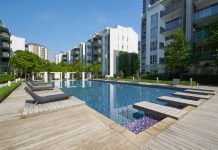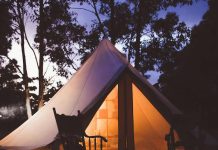
The environment of student housing is in the process of evolving, as the students of today are more diverse in terms of their interests and personal lifestyles. The potential job sites span across the range from the implementation of the latest technologies to overcome social issues to the construction of green residences for students. This post looks at the latest trends in student housing geared towards appealing to the various lifestyles and ensuring that every student gets the desired residence.
Eco-Aware Communities
Students now seek environmental sustainability on a broad basis rather than just as a specialist interest. Student housing of the modern era is catching up with energy-saving appliances, solar panels, and comprehensive recycling programs. Not only do these green apartments reduce their environmental impact, but they also attract students who value sustainability in their daily lives. Living in such settings can help people develop a stronger sense of belonging to the community and environmental stewardship.
Tech-Integrated Living
Modern accommodations with state-of-the-art technology are quite appealing to tech-savvy pupils. These places frequently have smart home appliances, fast internet, and modern technology-equipped collaborative work areas. These kinds of spaces not only foster creativity and learning but also simplify daily life, giving students more time to concentrate on their studies and less time on menial chores. Technology is being integrated into security systems as well; for increased safety, many homes have biometric locks and sophisticated surveillance.
Luxury and Leisure

Apartments for students are increasingly designed to resemble boutique hotels rather than dormitories. Some lavish accommodations provide private exercise centers, movie theaters on site, and rooftop terraces. Attracting students willing to pay a little bit more for a higher standard of living, this trend offers comfort and convenience while lowering the stress of college life. Additional opulent features that add to the opulent ambiance of some of the most upscale student housing include weekly housekeeping and personal concierge services.
Community and Collaboration
More than ever, communal spaces and teamwork are being prioritized in the design of student housing. These buildings are not complete without common areas, shared study lounges, and communal kitchens. These elements improve students’ academic and social experiences in addition to making networking and friendships easier. They also make learning more dynamic and integrated for students. Organized social events and academic workshops within these spaces further promote a vibrant community atmosphere.
Strategic Locations
Selecting a student residence still heavily depends on its location. Particularly attractive are facilities that are situated on university campuses or in close proximity to them. In Australia, for instance, to cut down on commute time and costs, UNSW on campus housing provides convenient access to academic buildings, libraries, and other campus resources. The attractiveness is increased by being close to local stores, entertainment places, and public transit, which gives students easy access to everything they need. Students are able to concentrate more on their studies because of this thoughtful arrangement, which reduces the time and expense of transportation.
Affordability without Compromise

Understanding the financial constraints tht many students face, developers are also focusing on creating affordable yet quality accommodations. These residences often leverage shared spaces to reduce costs while still providing essential amenities like reliable internet and communal study rooms. Solutions for affordable student housing make sure that, in order to keep within their budget, students don’t have to sacrifice quality or safety. Many also provide financial aid and flexible payment schedules to assist students in better controlling their housing costs.
Wellness-Centric Spaces
Considering the extreme stress that students frequently experience, wellness areas that support both physical and mental health are increasingly a common feature of many newly constructed dorms. These could be fitness centers, yoga studios, or even spaces set out for unwinding and meditation. Counseling services and mental health awareness programs are increasingly becoming commonplace, giving kids the tools and support they need to manage their stress and develop resilience. Outdoor areas that promote a connection with nature, such gardens and walking routes, are frequently added to these kinds of facilities.
Living and Learning Environments Integrated
Students’ evolving demands and expectations have continued to drive the growth of student housing. Developers are responding to current trends and influencing how students live and learn in the future by providing a range of living options that suit various lifestyles and interests. The objective is always the same: to give students a place where they may flourish both intellectually and personally, whether that is achieved through opulent amenities, technological integrations, or ecological living.



































